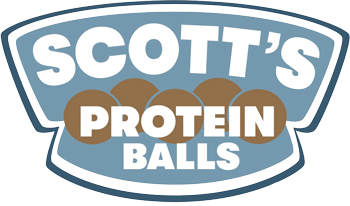
A Brief History of Psychedelic Research With Albert Garcia-Romeu
Want to learn more? Click here for tickets to Fran Drescher’s Health Summit 2022
For decades, the word psychedelic was most acutely tied to images of the “swinging” ‘60s, peace signs, and flower power. But perceptions are changing.
Half a century on from the counterculture movement, psychedelics are now firmly rooted in clinical research, as an exciting new avenue for drug-assisted psychotherapy.
Recently published in JAMA Psychiatry, a new viewpoint article from researchers at Johns Hopkins University and the University of Pennsylvania School of Medicine details the history and resurgence of this clinical interest in psychedelics, and lays out recommendations for the future direction of the field.
To learn more about this history and where psychedelic research is going, Analytical Cannabis caught up with Albert Garcia-Romeu, an assistant professor at the Center for Psychedelic and Consciousness Research at Johns Hopkins University.
The origins of psychedelics in medicine
Just as cannabis is a natural plant that was cultivated and used by humans for centuries as a medicine or as a component of spiritual practice, the same is true for many of the most prominent psychedelics. Such plant-derived psychedelics (also known as entheogens) include the likes of psilocybin, the active component in magic mushrooms, and ibogaine, a compound found in the bark of the Tabernanthe Iboga shrub, which is native to Gabon.
“These substances have been used and revered by indigenous cultures for a long time,” Garcia-Romeu told Analytical Cannabis. “I think that is an important piece of the backdrop here, because there’s a long history of use in those cultures for spiritual and other types of ritualistic purposes.”
In the 20th century, interest in the use of these compounds grew within the scientific community. When the synthetic psychedelic LSD was first developed in the 1930s, it led to new innovations in understanding how serotonin works, and eventually to a whole field of psychedelics study that thrived in the 1950s and ‘60s. Perhaps the most notable advance in these decades was the synthesis of ketamine and its later introduction into clinical practice as a powerful anesthetic agent.
But after roughly two decades of innovation, burdensome governmental regulations effectively halted all clinical research in the field. As the authors of the JAMA Psychiatry opinion explain, perceived connections between psychedelic substances and the anti-establishment culture of the time, negative media coverage, and lapses in research ethics all contributed to the field’s slow grind to a halt. It wouldn’t be until the 2000s before the drugs would again make an appearance in the mainstream scientific research scene.
A renaissance for psychedelic research
In 2006, a new publication from researchers at Johns Hopkins University thrust psychedelic drugs back into the spotlight. The research was a double-blind randomized clinical trial that looked at the effects of psilocybin on adults when administered in a supportive setting. They found long-term increases in positive mood, life satisfaction, and prosocial behavior in the participants given psilocybin across two or three treatment sessions.
Over the next 14 years, subsequent studies would tie psilocybin-assisted psychotherapy treatment with long-term improvements in treatment-resistant depression, anxiety in patients with advanced cancer, and as a potential intervention for alcohol dependence.
“In our lab, we’re mainly focusing right now on psilocybin for therapeutic studies, but we have done work here with lots of different types of drugs, including dextromethorphan and Salvinorin. A [a dissociative hallucinogen],” said Garcia-Romeu.
“With psilocybin, the main areas that are being studied are mood disorders and depression. There’s been work looking at a treatment of addiction, like tobacco or nicotine addiction, alcohol dependence, and cocaine,” he added. “We’re working on studies for opioid dependence as well. Those have been some of the main areas that were kind carryovers from the 1960s, where they showed promise and we’ve picked that back up more recently.”
“The other big areas were more in the palliative care side, for patients with terminal illnesses who also have mental health challenges like anxiety, depression, and usually don’t tend to respond very well to the normal course of antidepressant medications.”
Difficulties with psychedelics research
In another parallel to cannabis, many psychedelic compounds remain classified as Schedule I drugs in the United States. And just as in cannabis research, this can sometimes be a complex barrier to overcome.
“It’s not too difficult to get [projects] approved now, granted that you have the infrastructure to conduct Drug Administration research. So that’s already a high bar,” Garcia-Romeu explained.
“You have to have the type of facilities available to have a pharmacy, have a team of doctors and nurses, all the stuff that you need to have to do this work safely. And this expertise is not something that a lot of people have, because not many people have been able to do this. So that can be a little bit of a stumbling block.”
In terms of funding, there is again a similar Catch-22 to the one that is seen in cannabis research. A Schedule I drug has, by definition, “no currently accepted medical use” according to the US Drug Enforcement Administration (DEA), and so it is incredibly tough for a scientist to secure federal funding to study a drug for medicinal use which the federal government already considers to have no medical value.
For the entheogen psychedelics, which are derived from plants, there is also relatively little commercial appetite to invest in such expensive research projects.
“There are some good parallels to be drawn there [with cannabis], because cannabis is a natural product, so it’s a plant that can grow just like psilocybin mushrooms,” said Garcia-Romeu.
“That creates difficulty moving it through the normal pharmaceutical development pathways where normally there’s a proprietary substance that someone has developed. And as a result, this has been a weird process that’s gone quite slowly for the last 20 years because nobody really wanted to touch it; it was difficult to do anything that would get this into a space of medical approval, and where they would also be able to have a proprietary formulation to make money off of it.”
Avoiding another dead end for psychedelics research
The first wave of psychedelics research ultimately ended with the ‘60s. To secure a solid path forward for today’s contemporary research, the authors of the JAMA Psychiatry paper restate several times the importance of conducting more randomized clinical trials. These trials can help to replicate and extend the promising initial findings thrown up by the early open-label trials conducted in the mid-20th century and at the turn of the millennium. And as the scope of potential applications widens, further studies on ideal dosing schedules and other practical necessities will need to be looked at closely.







